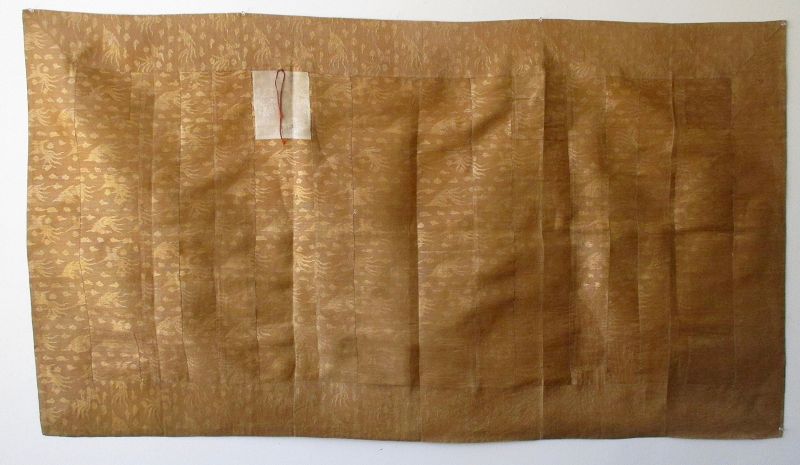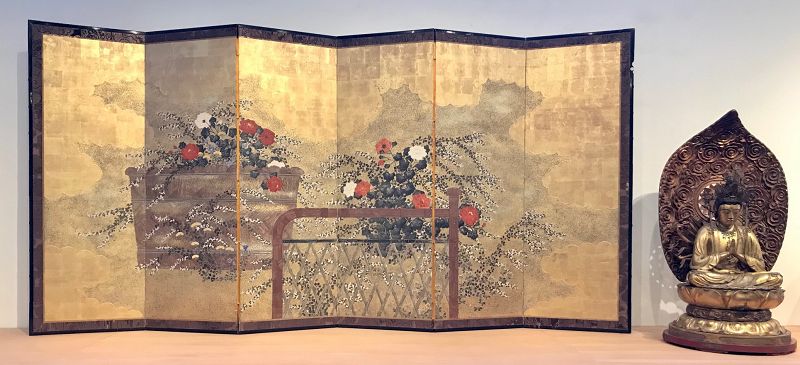Japanese antique rectangular kesa or priest/monk's outer vestment cloth. This asa (hemp) kesa is a yellow/gold color and finely woven with a design of phoenixes and clouds.
Often described as a mantel or robe, the kesa is worn draped diagonally over the left shoulder and under the right armpit. It is meant as a reminder of the Buddha's own simple patched garment, kesa are formed from many fragments of the same cloth. Within each garment, the fragments are typically organized in a series of columns framed by a border with miters corners. The number of columns, in this case 7, indicates both the specific function of that garment and also the rank of the wearer within the religious hierarchy. Six additional squares of the same material reinforce points of stress from wear but have symbolic value as well. Attached silk loops on the back side, helped hold the garment in place when worn. The sumptuous fabrics used to make kesa are often from reused garments - Noh theatricial robes, kimonos even Chinese robes, donated to temples by wealthy devotees.
Age: Taisho Period (1912-1926)
: Dimensions: 44" wide x 80 1/2" long
Japanese Antique Gold Asa Kesa Cloth (Buddhist Priest's Vestment)
$2,000.00
https://zentnercollection.com/product/japanese-antique-gold-asa-kesa-cloth-buddhist-priests-vestment/


